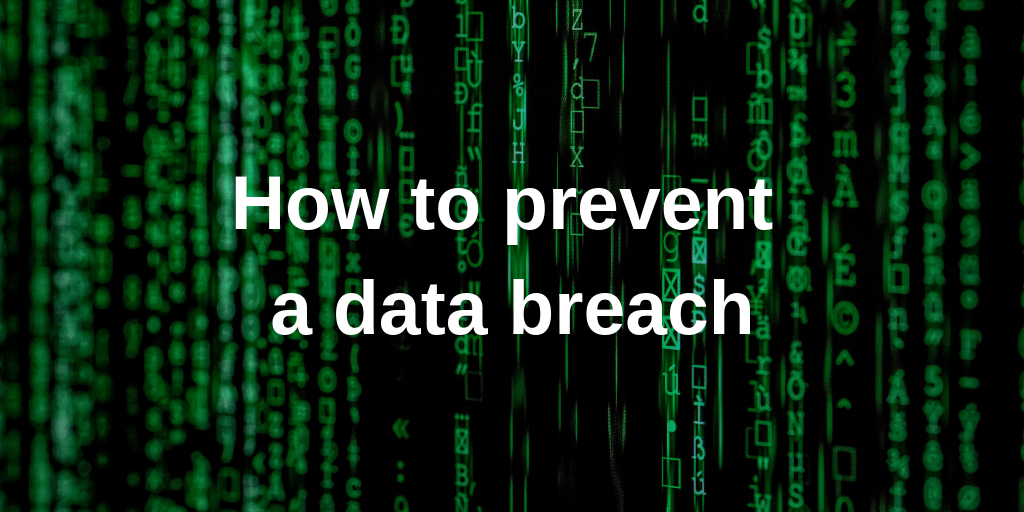Every organisation that stores any form of sensitive data is at risk if that data is leaked outside of their own environment, which means that every single organisation should realise that cybercrime is a real threat to their finances and reputation. A troubling thought, but there are several steps that you can take to greatly reduce the danger of having your data stolen.
Data breaches can happen for malicious reasons from outside threats, but what a lot of organisations fail to realise is the threat that their employees may unwittingly pose. Employees that are not properly trained in the correct cybersecurity practices may not be aware of the danger they pose. From clicking on phishing emails to falling victim to baiting employees are often the root cause of a data breach.
Make sure the entire company is aware
To keep your organisation’s network secure, it is of paramount importance that each and every individual in the organisation understands that cybersecurity is not solely the responsibility of the IT department. It should be made clear immediately that data breaches can happen from internal negligence just as easily as they can occur from criminals through a computer. It needs to be made clear that being a responsible digital citizen of the company is just as important as not leaving the building unlocked when they leave at night.
These risk factors could be as seemingly innocuous as keeping passwords written down and stuck to the desk beside their monitor, to more serious mistake such a sending sensitive data to spearphishers posing as senior executives.
The main problem around insider threats is that they are regularly viewed as minor mistakes rather than potentially brand-damaging catastrophes. In order for organisations to maintain a secure environment for their data, they must ensure that each employee must understand and take responsibility for the threat that data breaches pose. The managers of the organisation must take initiative to ensure and properly train each employee on what they need to know in order to keep the internal network and the organisation's sensitive data secure.
Organisations that are proactive in their efforts to prevent data breaches always fare better in the cybersecurity sphere than those who do not. Simply ignoring the issue or relying on the IT department as your first, last and only line of defence is an approach that simply will not work in an age where the employees have access to computers, phone and tablets with sensitive information 24/7. Storage of data is an unavoidable aspect of modern business but it needs to be stored correctly and following appropriate processes.
Making certain that all employees are aware of the responsibility they have to protect the data they have access to is extremely important. IT administrators can employ third-party software, such as Enterprise Recon, to allow for a more granular settings policy. This, for example, would give administrators the option to limit how much data employees have access to and the level of access, such as being ‘read-only’ versus full editing access.
This ensures that only those with the correct credentials have access to the data they require and minimises the risk of accidental breaches due to negligence.
This granular approach to data resource management also allows IT administrators to see and monitor who views data, accesses it or edits it in any way. The also allows them to delegate responsibility and keep track of who has access to what data. They can also be notified of when an attempt to access is denied and if an attack was attempted.
The implementation of a thorough and flexible cybersecurity posture is imperative when generating a secure working environment where employees can work in the confidence that they have a strong cybersecurity protocol to adhere to and everyone in the organisation is in the same frame of mind with regards to maintaining a secure network.
Test your strategy
The final step is certainly the least pleasant to think about, but having it in place in advance will mean that you will not need to do it when the worst happens. This involves planning what to do in the event of a data breach. This is a vitally important aspect of any cybersecurity strategy and is an essential requirement for many compliance policies that govern data security.
You must ensure that all parties that may be affected by the data breach are notified in good time, these include stakeholders, customers, regulators and law enforcement agencies. Hopefully, this step is only precautionary but it is undoubtedly better to have and not need than need and not have when it comes to data security.
Be prepared
Always assume that your data is at risk, because it is. The only truly effective way to counter data breaches is constant vigilance and ensuring that every possible step is taken to keep your data locked down and secured.
Any public facing web-based interactions that your organisation carries out is open to attack. It is good practice to assume that opportunistic hackers are constantly testing your cyber defences for potential vulnerabilities and exploits. Therefore it is important to try and get into the mindset of the hacker when considering ways to counter data breaches.
Is there some sensitive data sitting in an email, database or your cloud network? If so, how could someone gain access to it? Then when you understand where the holes in your network are or could be, you can take action to plug them or close them off. When strategizing about how to prevent a data breach, anything that makes the attacker’s job more difficult is a step in the right direction.
Encrypt your data
This makes it an ideal solution for organisations who want to make sure that only the right people have access to their most valuable asset, their data.
Simple encryptions can greatly reduce the risk of data being stolen because, as mentioned in the previous step, anything you do that makes it more difficult for hackers to attack is the right thing to do.
Keep improving
Possibly the most important step in any strategy, never stop innovating and bolstering your cybersecurity posture.
No strategy is perfect and even if you believe you have taken every action you feel is necessary, there is always more that can be done. There is no fix-all solution, the only way to stay secure is to keep trying to improve and try new methods.

